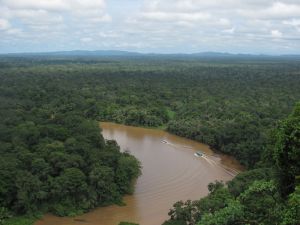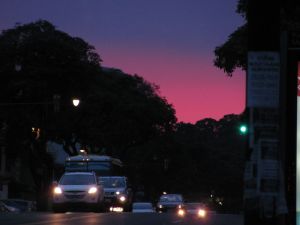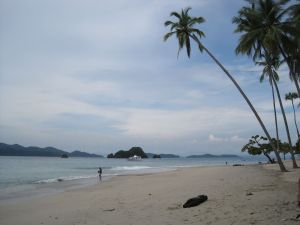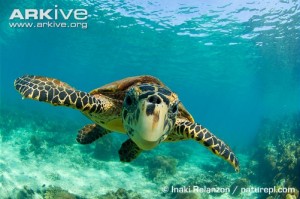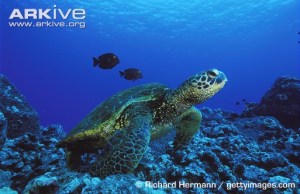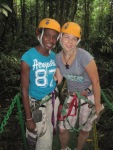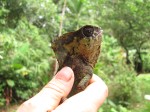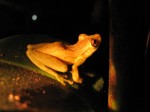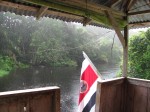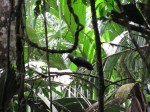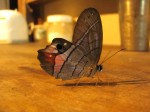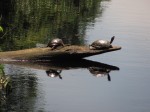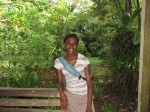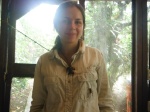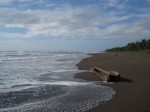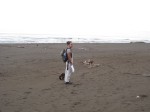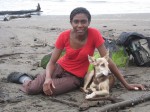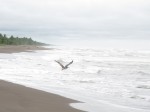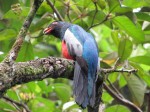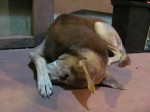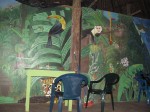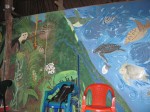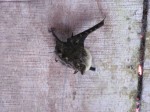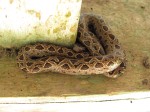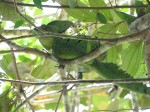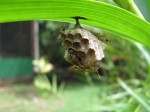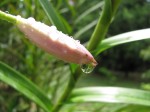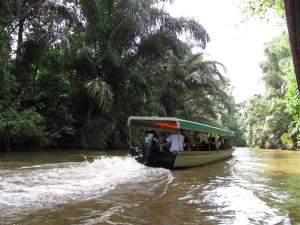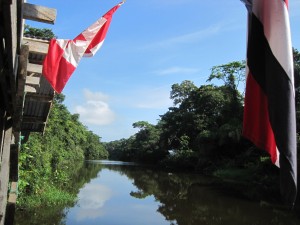Pura Vida or a few words on Costa Rican culture
Coming back to Canada has allowed me to look back at my experience in Costa Rica, where I have spent three and a half months, to make a number of comparisons and conclusions. One of the observation that I have made, which perhaps came from spending a lot of time in a rural area, is how relaxed Costa Ricans were. There was no rush in the village of San Francisco and everyone carried on at their own speed, savouring each day. The most popular expression in Costa Rica, which is also unique to the country, is “Pura Vida” which translates as “Pure Life”. This beautiful expression is used in numerous ways: as a greeting, to say “I’m doing well”, as a “Thank You”, as a “Good Bye” and even as an adjective to describe something you have really enjoyed. Perhaps these two words best describe the philosophy of many Costa Ricans, which is seen through their ability to celebrate the beauty of life.
Living in Costa Rica has reminded me of how little one really needs to be happy and that we often value the least the things that our happiness needs the most. This experience has made it easier to see that those of us that live in a consumer-oriented society often tend to be attached to many unnecessary things and tend to base our happiness on possessions. In the village of San Francisco, most people live in small, one-room houses shared by the entire family. They often have to face challenges, such as the floods that frequently occur during the rainy season. Yet, such life conditions don’t take away their ability to appreciate what they have. Many Costa Ricans had inspired me by their ability to see the priceless value of family, friendship, human communication and beauty of the world around them. Perhaps, if one really wants to celebrate life, the opportunities will present themselves. I remember taking a public boat where all the men gathered by the radio and sang along the entire two-hour ride turning routinely travelling into a pleasant experience …
I’ve been touched by the warmheartedness and friendliness of many Costa Ricans. When staying in the village of San Francisco and the towns La Fortuna and Montezuma (the few places that I got to visit, all in different parts of the country), everywhere I went, I was met with greetings and warm smiles. This is not a typical reaction that I have observed in other places that I had traveled to, especially those where tourists are very common. It was also a pleasure to observe how people in the San Francisco community interacted – always cheerful and caring toward each other. Adults in the community work together to build a better future for their children, through actions such as gathering together to build an extension to the elementary school building. The new room will be used for computers which had been recently donated to the school.
I also admired how open to nature Costa Ricans are. Most houses in the places I’ve visited had no glass windows – instead a net was installed to keep insects from getting in. Although some tourists suggest that people should be better protecting themselves from nature, the Costa Ricans I met say there is no need. Yes, nature may sometimes “intrude” in the form of monkeys stealing bananas from your kitchen or geckos chasing each other around your room, all of these “intrusions” are harmless and friendly in nature. It is thanks to the help of extremely knowledgeable Costa-Rican-born nature-lovers, that I was really able to connect with and learn the most about the local flora and fauna. I am very thankful to Manuel and Mario, who have generously shared their knowledge with me.
More thoughts on culture
Recently, one of my professors has asked his audience to define the term culture. After an hour-long discussion, my class was guided into defining culture as the “discovery of who we are”, a definition that I had never linked to the word culture in the past. It is believed that we learn a lot about ourselves and our beliefs when we compare “our own culture” to one that is very different from it. Such comparisons challenge our beliefs and allow us to start differentiating between beliefs that are truly our own and those that we have simply accepted as being a part of our culture. Such comparisons allow us to see alternative ways of looking at things or acting, which sometimes reveals that what we thought was ideal and right, in reality is not ideal at all. Living in Costa Rica has made it easier to see both flaws and beauties of places where I have lived most of my life. Likewise, it revealed that just like in any other country, life in Costa Rica has both downsides and upsides.
Global citizenship
During my stay in Costa Rica, I met numerous people who really wanted to travel, but never had a chance to leave the country. Many of them had learned to speak fluent English and were very knowledgeable about other countries and cultures. This had only inspired me to learn more about the Costa Rican culture and history and strengthened my feeling of being very lucky and privileged to have an opportunity to travel and explore the world.
I was asked what do I think about global citizenship and whether I see myself as a global citizen. I must point out that there are multiple concepts and definitions revolving around the term “global citizenship.” The definitions that I can most relate to is “taking the responsibility to understand what consequences our actions can have not only where we live but in other countries as well, and making responsible choices that maximize well-being on our planet.” With such definition in mind, I believe that global citizenship is certainly something we should strive for. I also feel that becoming a global citizen under this particular definition is a life-long goal as we cannot change in one day. Traveling to Costa Rica has made it much more clear how easily the actions taken by people in one part of the world will influence the living environment at the other side of the globe. For instance, dramatic declines of sea turtles nesting in Costa Rica are partly linked to fishing and oceanic pollution occurring off the shores of countries like Canada, where the same sea turtles spend time during certain time of the year. Likewise, using once again an example of an endangered animal, declines and disappearance of macaws from Costa Rican wild can be linked to illegal pet trade, with many of the purchasers coming from places like North America (who fuel the pet trade by making their purchases). The list of such connections can go on and on.
Lastly, as part of my blog-assignment I was asked to complete a quick survey about my experience:
Five things that I enjoyed about my internship experience are:
1. All the beautiful and trusting animals I got to see and even make friends with
2. Wonderful and inspiriting people I got to meet, work with and become friends with
3. Landscapes that took my breath away
4. Simplicity of life
5. Warm weather
Five things that bothered me during my internship experience are:
1. Bug bites
2. Having to wear wet clothes during a rainy week when nothing would dry in the humidity
3. Lack of sleep
4. Being in one place all the time
5. Sharing a small living place with many people – which sometimes meant no place to be on your own
Five things I missed most about Canada/Toronto are:
1. Family, friends and my cat
2. Capoeira
3. Home-cooked food of my choice
4. Dry non-mouldy clothes that wouldn’t smell like bug spray
5. Having no sand in my hair
Five things I will miss from my host country are:
1. The amazing friends I have made
2. Being outdoors and surrounded by animals at all times
3. Harmonious lifestyle with no stress
4. The non-stop choir of crickets and birds that I got to fall asleep to
5. Walking 10 km on the beach and moving around all day long instead of having to sit still
